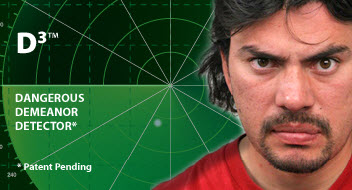 Humintell Director, Dr. David Matsumoto and lead Research Scientist Dr. Hyisung Hwang have new research that can aid government agents and law enforcement officers in identifying the signs of imminent aggression or violence.
Humintell Director, Dr. David Matsumoto and lead Research Scientist Dr. Hyisung Hwang have new research that can aid government agents and law enforcement officers in identifying the signs of imminent aggression or violence.
When elicited, emotions prime behaviors initiating unique, organized, and coordinated physiological signatures and mental structures. The faces displayed from these emotions are immediate, unconscious, involuntary, and transient reactions that occur as a result of an appraisal of an event that has implications for the welfare of the organism and potentially require immediate response. This research, published in the journal of Threat Assessment and Management, delineates faces that are associated with an imminent attack.
In four studies, Drs. Matsumoto and Hwang examined the possibility that certain facial expressions are reliably associated with acts of immediate, subsequent violent behavior. They posited that facial expressions of emotion, specifically variants of anger, offer a potential marker for such signs as acts of violent behavior because emotions are rapid information processing systems that aid individuals in making decisions and engaging in action with minimal conscious awareness. They also delved into the question of whether imminent aggressive facial expressions are similar across cultures.
The researchers noted that emotions can be expressed in full-face prototypes, such as those depicted in the Pictures of Facial Affect (Ekman & Friesen, 1976) or the Japanese and Caucasian Facial Expressions of Emotion stimulus sets (Matsumoto & Ekman, 1988). However, emotions can also be displayed very subtly, with muscles innervated only slightly or intensely with muscles innervated at maximum strength. Emotions can also be displayed in only parts of the face (aka partial expressions; see Ekman & Friesen, 1978; Matsumoto & Hwang, 2013).
Much research has distinguished these two types of aggression, the former also known as proactive, instrumental, predatory, or cold aggression, the latter also known as reactive, affective, emotional, hostile, or hot aggression (Dodge, 1991; Fontaine, 2007; Meloy, 2006; Siegel & Victoroff, 2009). Although the distinction is neither simple nor universally accepted (e.g.,Bushman & Anderson, 2001), in broad terms it is a useful heuristic and reasonable starting point for this research.
The researchers conducted four studies that provide evidence for the existence of specific facial expressions of emotion, and more specifically variants of angry expressions, that may precede imminent assault as well as a cross-cultural link between specific facial expressions of emotion and subsequent, immediate behavior. The same expressions were identified by three samples of law enforcement officers in two different cultures and by two samples of university students with and without experience with physical assault.
Because Drs. Matsumoto and Hwang have been able to isolate exactly which faces are associated with an impending attack through their research, they can teach individuals to identify them.
Through this research they have developed a training tool, Dangerous Demeanor Detector or D3™, which helps individuals identify others who are on the verge of dangerous actions.